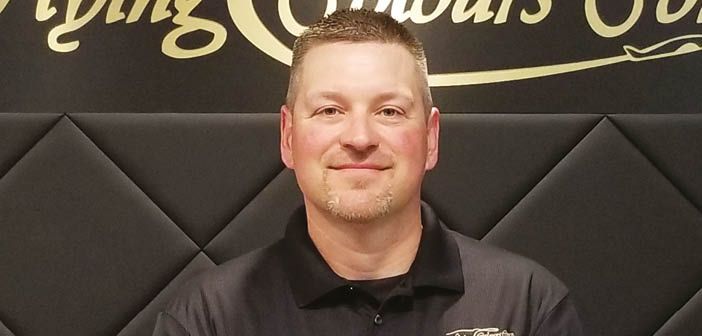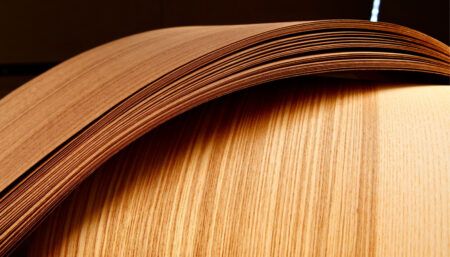Brian Penning, director of interiors and cabinet maker at Flying Colours’ facility in St Louis, Missouri, gives an insight into his work
How did you get into this craft?
My career started with an aviation and composite programme at Pima College in Tucson, Arizona. I was hired right out of school in 1999 to work in Bombardier’s interior backshops in Tucson. After four years I moved to their facility in Wichita, Kansas, where I was the shop floor lead of the interior backshops and then Learjet completions supervisor, as well as flight supervisor, and leading methods and continuous improvement. In 2013 I started at Jet Aviation St Louis as manager of upholstery, trim, cabinet and finish shops, and in 2017 became director of interiors at Flying Colours Corp (FCC), where I enjoy leading the cabinetry department.
What do you love about it?
From edge banding to veneering, cabinet makers must combine creativity with precision, committing to tight tolerances and zero defects to best show the beauty of the wood. Nothing is cooler than watching the gradual transformation of sheets of composite panels and veneer into high-quality cabinets.
Another thing I have loved throughout my career, and especially at FCC, is working with such talented people. The FCC cabinet shop averages more than 10 years of expertise building aircraft cabinets per employee.
What are the challenges?
Aircraft interiors are more complex than ever, we live in an instant gratification society and so the downtime for completion keeps getting shorter. It’s also challenging to retain true craftsmanship as it meets contemporary technology, but we understand why we need to do so and take pride in making it work.
What are your day-to-day tasks?
I monitor the progress of projects and clear road blocks for my teams. It’s also vital the working environment is safe. I’m also involved in bids, helping customers understand what is needed to achieve their desired look.
Cabinet making starts with CNC programming and cutting. We assemble the pieces to make the shell, adding hinges, latches and other furnishings as needed, then install the veneers, laminates and edging. We then take the cabinet apart again to complete painting and finishing in our dedicated spray booths. This requires masking off sections for painting.
In finishing cabinets we repeat a sand, spray and cure process that takes at least 24 hours and is repeated as many times as necessary. Once ready the cabinet is sanded and buffed by hand. Detailing and the installation of harness and components happens at this point. The cabinet is then assembled and all details are checked. Cabinet making requires patience and attention to detail. Sometimes the daily tasks become nightly tasks too. On one project we had to move some of the team to night shift for a few weeks. Our team is very positive, and we always aim to deliver on time and budget. Being director of the cabinetry team really blends the skills of a craftsman with the commercial acumen of a businessmen.
What are you most proud of?
I’m always very proud to deliver a top-quality product.
What advice do you have for people starting in this career?
If you are a cabinet maker you can also be a salesperson, a business person and support marketing activity, so don’t pigeonhole yourself. Always take the opportunities presented. For example FCC is always looking for new faces; we have a great apprentice programme where we start training on day one. The hands-on approach is a great way to learn.
What has surprised you, and what would you change?
One surprise is the difference between how we built interiors when I started and how we do things today. Today we are faster and use more technology, but we still rely on skilled cabinet makers, upholstery techs and finishers to complete world-class interiors.
This interview was published as part of a larger feature profiling craftspeople in the July 2019 issue of Business Jet Interiors International. Click here to read the full article.





